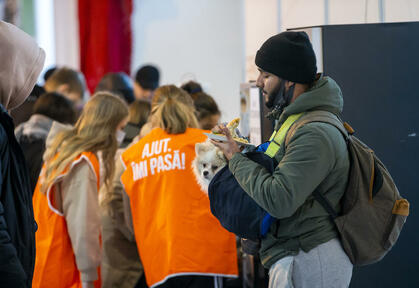On saving face – Dan Sabbagh in The Guardian:
‘Early mistakes have included Russia’s dramatic helicopter landing of airborne forces at Hostomel military airport just north-west of Kyiv, far ahead of the prevailing invasion and without any meaningful air support. Four days of fighting in the area ensued, with Ukraine able to drive out Russian forces from the nearby Buch and Irpin towns just out the side the capital.
A similarly half-hearted attack took place on Sunday in the eastern city of Kharkiv, where there was an incursion of Russian spetsnaz commandos using who, judging by the video reports, only used trucks and light armoured vehicles rather than tanks. It was beaten back by lunchtime, suggesting it was not a serious attempt at conquest.
Equally baffling to western observers has been Russia’s limited use of air power. It had been assumed that Moscow would aim to knock out Ukraine’s jets and helicopters on day one and establish air superiority. Justin Bronk, an air power analyst at the Rusi thinktank, said: “I am quite surprised and confused by the lack of publicly available activity by the bulk of Russia’s fixed-wing aircraft.”’
(…)
‘But these are also simply the opening salvos of a war. For all the Russian missteps so far, Moscow’s larger forces have made steady progress elsewhere, sidestepping resistance where possible. Its principal invasion forces have headed to Kyiv, and on Sunday night, the city’s mayor, Vitali Klitschko, said in an interview, “Right now we are encircled”. This was later clarified by his press team who said Klitschko was speaking figuratively and that Kyiv wasn’t literally blocked.
Russian forces also appear to be gradually cutting off the south, east of Kherson, on the mouth of the Dnieper, with only an increasingly isolated Mariupol holding out. In other words, the Russian mistakes may have only obscured the underlying strength of its overall position.
Western nations have rushed to offer to send more weapons to Ukraine, notably Germany, which has ended its postwar hesitance over arms exports and offered to send 1,000 anti-tank weapons and 500 ground-to-air Stinger missiles. The question now will be whether they can get the supplies there by land, as Russia controls more key points of territory.
Western analysts have been predicting that Russia would try to encircle Kyiv, a city of around 3 million people, for weeks – and try to use the FSB spy agency to deliver the city through a coup. So far, however, there has been little sign of a determined fifth column in the country, and it may well be the case that Putin will seek to take Kyiv by force.
The anxiety is that Putin may resort to urban warfare – grim combat where an attacker is considered to need an advantage of five to one to prevail. It is not clear how organised Kyiv’s defences are, given Zelenskiy’s last-minute mobilisation last week, but one way Russia could force a victory is to use weaponry indiscriminately, particularly if Putin is determined to gain a quick win in order to save face.’
Read the article here.
Germany is not so reluctant when it comes to selling arms. That’s a myth.
Germany is after the US, Russia and France the fourth largest exporter of arms.
Asking volunteers to fight for Ukraine, and handing out weapons and Molotov cocktails might deter Russia from a long and painful invasion, but it might also lead to gruesome urban warfare.
Of course, the Ukrainian people have the right to defend themselves.
But urban warfare, as former Yugoslavia taught us, will create thousands and thousands of refugees, wounded and killed fighters and civilians.
When the refugee crisis becomes unbearable the international community will finally intervene.
How many civilian deaths does it cost to save your face?
